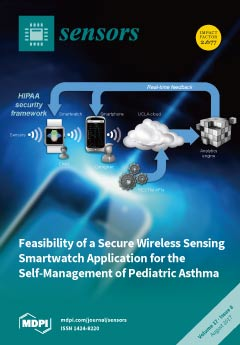The adsorptive stripping voltammetric detection of nickel and cobalt in water samples at metal film electrodes has been extensively studied. In this work, a novel, environmentally friendly, metal-free electrochemical probe was constructed for the ultra-trace determination of Ni
2+ in water samples by
[...] Read more.
The adsorptive stripping voltammetric detection of nickel and cobalt in water samples at metal film electrodes has been extensively studied. In this work, a novel, environmentally friendly, metal-free electrochemical probe was constructed for the ultra-trace determination of Ni
2+ in water samples by Adsorptive Cathodic Stripping Voltammetry (AdCSV). The electrochemical platform is based on the adsorptive accumulation of Ni
2+ ions directly onto a glassy carbon electrode (GCE) modified with dimethylglyoxime (DMG) as chelating agent and a Nafion-graphene (NGr) nanocomposite to enhance electrode sensitivity. The nafion-graphene dimethylglyoxime modified glassy carbon electrode (NGr-DMG-GCE) shows superior detection capabilities as a result of the improved surface-area-to-volume ratio and enhanced electron transfer kinetics following the incorporation of single layer graphene, while limiting the toxic effects of the sensor by removal of the more common mercury, bismuth and lead films. Furthermore, for the first time the NGr-DMG-GCE, in the presence of common interfering metal ions of Co
2+ and Zn
2+ demonstrates good selectivity and preferential binding towards the detection of Ni
2+ in water samples. Structural and morphological characterisation of the synthesised single layer graphene sheets was conducted by Raman spectrometry, HRTEM and HRSEM analysis. The instrumental parameters associated with the electrochemical response, including accumulation potential and accumulation time were investigated and optimised in addition to the influence of DMG and graphene concentrations. The NGr-DMG-GCE demonstrated well resolved, reproducible peaks, with RSD (%) below 5% and a detection limit of 1.5 µg L
−1 for Ni
2+ reduction at an accumulation time of 120 s., the prepared electrochemical sensor exhibited good detection and quantitation towards Ni
2+ detection in tap water samples, well below 0.1 mg L
−1 set by the WHO and EPA standards. This comparable to the South African drinking water guidelines of 0.15 mg L
−1.
Full article






